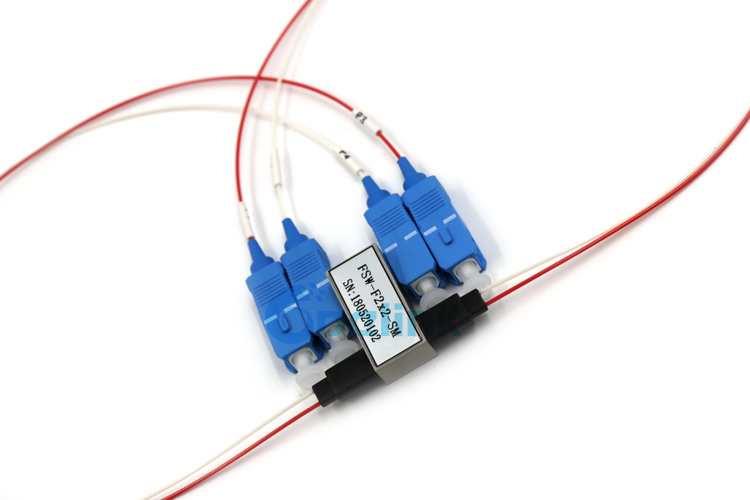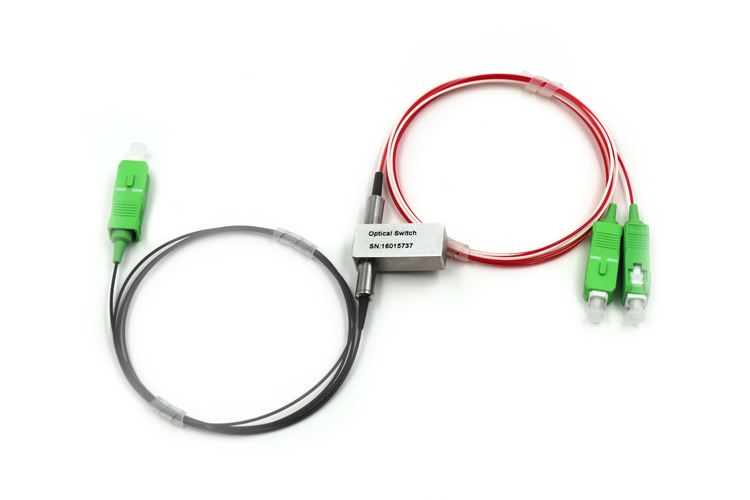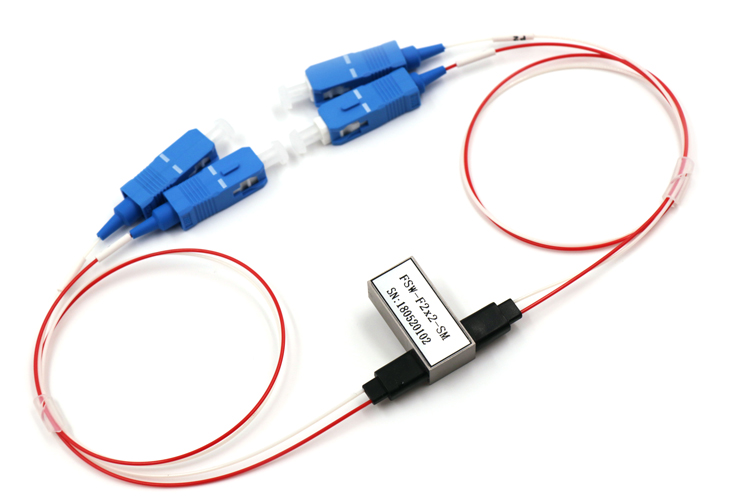Optical Switches: A Comprehensive Guide to Classification, Models, Functions and Uses
Optical switches play a critical role in fiber optic networks by enabling efficient routing and management of optical signals. In this article, we will explore the classification, models, functions, and uses of optical switches to understand their significance in enhancing network performance and flexibility.
 Classification of Optical Switches:
Classification of Optical Switches:
Optical switches can be classified based on their underlying technology and switching mechanism:
1.Mechanical Optical Switches: These switches use mechanical components, such as micro-mirrors or fiber-optic rotary switches, to redirect optical signals. They are reliable, cost-effective, and widely used in applications where speed is not the primary concern.
 2.Micro-Electro-Mechanical Systems (MEMS) Optical Switches: MEMS switches utilize tiny movable mirrors or micromirrors controlled by electrostatic forces. They offer fast switching speeds, low power consumption, and high reliability, making them suitable for various network applications.
2.Micro-Electro-Mechanical Systems (MEMS) Optical Switches: MEMS switches utilize tiny movable mirrors or micromirrors controlled by electrostatic forces. They offer fast switching speeds, low power consumption, and high reliability, making them suitable for various network applications.
3.Liquid Crystal (LC) Optical Switches: LC switches employ liquid crystal materials to control the polarization of light and redirect optical signals. These switches are compact, offer fast switching speeds, and are ideal for photonic integrated circuits and fiber-to-the-home (FTTH) applications.
Models of Optical Switches:
There are different models of optical switches available in the market, each catering to specific network requirements:
1.1xN Optical Switches: These switches allow one input fiber to be connected to multiple output fibers, enabling signal distribution to different destinations. They are commonly used for network monitoring, testing, and reconfiguration purposes.
 2.NxN Optical Switches: NxN switches provide the capability to connect multiple input fibers to multiple output fibers, allowing for more complex and versatile signal routing. They are utilized in dynamic network setups, data centers, and telecommunication networks.
2.NxN Optical Switches: NxN switches provide the capability to connect multiple input fibers to multiple output fibers, allowing for more complex and versatile signal routing. They are utilized in dynamic network setups, data centers, and telecommunication networks.
 3.Protective Optical Switches: These switches are designed to provide redundancy and failover protection in network systems. They automatically switch to a backup fiber optic path in the event of a failure, ensuring uninterrupted signal transmission and network reliability.
3.Protective Optical Switches: These switches are designed to provide redundancy and failover protection in network systems. They automatically switch to a backup fiber optic path in the event of a failure, ensuring uninterrupted signal transmission and network reliability.
Functions and Uses of Optical Switches:
Optical switches offer several important functions and find applications in various industries:
1.Signal Routing and Management: Optical switches enable the selective routing of optical signals, directing them to specific destinations or paths within a network. This function enhances network efficiency, reduces latency, and allows for effective traffic management.
2.Network Monitoring and Testing: Optical switches are crucial for network monitoring, maintenance, and testing procedures. They facilitate the rerouting of signals to monitoring devices, helping to identify and troubleshoot issues, measure network performance, and ensure optimal network operation.
3.Optical Add/Drop Multiplexing (OADM): Optical switches are used in OADM systems to add or drop specific wavelengths from a multi-wavelength optical network. This function allows for efficient wavelength division multiplexing (WDM) and enables flexible allocation of bandwidth in optical networks.
4.Photonic Integration and Photonic Integrated Circuits (PICs): Optical switches are essential components in photonic integrated circuits, which integrate multiple optical functions onto a single chip. They help realize complex optical signal routing and switching capabilities in compact and efficient form factors.
5.Data Centers and Telecommunication Networks: Optical switches are extensively used in data centers and telecommunication networks to manage and control the flow of optical signals. They support high-speed data transmission, facilitate network scalability, and enable dynamic reconfiguration for optimal resource utilization.
In conclusion, optical switches play a vital role in modern fiber optic networks, offering efficient signal routing, network management, and testing capabilities. By understanding the classification, models, functions, and uses of optical switches, network operators can make informed decisions in selecting the right switches to meet their specific network requirements, leading to enhanced network performance, flexibility, and reliability.




 The Future of Fiber Optic Communication Network Architecture: Evolution and the Role of SDON Technology
The Future of Fiber Optic Communication Network Architecture: Evolution and the Role of SDON Technology
 What opportunities and challenges does free-space optical communication technology face?
What opportunities and challenges does free-space optical communication technology face?
 Opelink MPO Products for High-Speed Data Center Applications
Opelink MPO Products for High-Speed Data Center Applications
 CWDM vs. DWDM: Which Optical Transmission Technology Should You Choose?
CWDM vs. DWDM: Which Optical Transmission Technology Should You Choose?